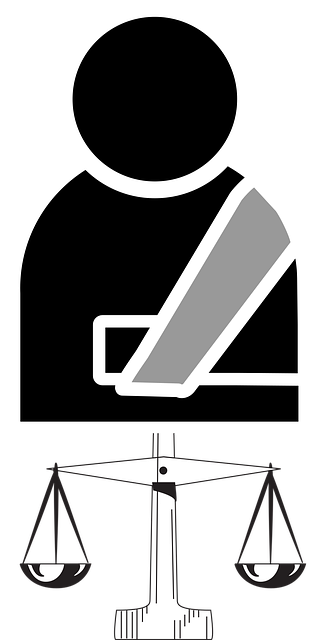Personal injury law is a critical legal field addressing accidents and injuries, focusing on justice and compensation. Key concepts include liability for negligence causing harm, and damages covering medical expenses, lost wages, and pain. Common claims arise from car crashes, slip-and-falls, medical malpractice, product liability, and workplace injuries. Specialised attorneys guide victims through complex processes, ensuring their rights are protected and they receive fair compensation, including coverage for immediate and long-term impacts of severe injuries or disabilities.
Personal injury law encompasses a range of legal issues, from understanding key concepts and definitions to navigating complex cases. This article delves into crucial aspects of personal injury law, including common types of claims, the role of legal professionals, and compensation processes. By exploring these topics, individuals can gain valuable insights into their rights and the steps to take after an accident, ensuring they receive fair and just damages. Discover how to effectively navigate personal injury lawsuits with this comprehensive guide.
- Understanding Personal Injury Law: Key Concepts and Definitions
- Common Types of Personal Injury Claims and How to Proceed
- The Role of Legal Professionals in Personal Injury Cases
- Navigating Compensation and Damages in Personal Injury Lawsuits
Understanding Personal Injury Law: Key Concepts and Definitions

Personal injury law is a complex legal field that encompasses various types of accidents and injuries, including car crashes, slip and fall incidents, medical malpractice, and more. At its core, this area of law aims to provide justice and compensation to individuals who have suffered harm due to someone else’s negligence or intentional actions. Understanding the key concepts and definitions within personal injury law is essential for both victims seeking redress and legal professionals navigating these cases.
Central to personal injury claims is the concept of liability, which determines responsibility for an accident. Negligence, a common cause of action, involves proving that a defendant owed a duty of care, breached that duty, and directly caused harm to the plaintiff. Damages, another critical aspect, refer to the compensation awarded to cover medical expenses, lost wages, pain and suffering, and other losses incurred due to the injury. These legal principles form the backbone of personal injury law, ensuring that those injured have a legal pathway to seek redress and receive fair compensation.
Common Types of Personal Injury Claims and How to Proceed

Personal injury claims can arise from a variety of situations, with car accidents being one of the most common types. If you’ve been involved in such an accident, it’s crucial to understand your rights under personal injury law. The first step is to ensure your safety and that of others involved. Then, document the scene by taking photos of vehicles, injuries, and any visible damage. Collect contact information from witnesses and details from the other driver, including their insurance information.
Other prevalent personal injury claims include slip and fall incidents, medical malpractice, product liability, and workplace injuries. Proceeding with such cases often involves filing a claim with the appropriate insurance company or taking legal action against the responsible party. Consulting an experienced attorney specializing in personal injury law can provide valuable guidance tailored to your specific circumstances, ensuring you receive fair compensation for your injuries and other associated damages.
The Role of Legal Professionals in Personal Injury Cases

Legal professionals play a pivotal role in personal injury cases, guiding individuals through complex legal systems to achieve just compensation. They are essential in ensuring that victims’ rights are protected and that they receive fair treatment throughout the process. Personal injury lawyers specialize in various aspects of law, including tort law, which governs civil wrongs and provides remedies for harmed parties.
These professionals assist clients by investigating accidents, gathering evidence, interviewing witnesses, and negotiating with insurance companies to secure settlements or prepare cases for trial. Their expertise in personal injury law enables them to navigate the intricate legal procedures, ensuring that their clients’ interests are represented effectively.
Navigating Compensation and Damages in Personal Injury Lawsuits

Navigating compensation and damages in personal injury lawsuits is a complex process, often requiring careful consideration and expert legal guidance. In personal injury law, individuals who have suffered harm due to someone else’s negligence or intentional acts can seek redress through legal action. The primary goal is to secure compensation that not only covers immediate medical expenses but also accounts for long-term care, lost wages, and pain and suffering. Damages can be substantial, especially in cases involving severe injuries or permanent disabilities.
When pursuing a personal injury claim, it’s crucial to understand the different types of damages available. These may include economic damages, which are easily quantifiable, such as medical bills and lost income. Non-economic damages, on the other hand, like pain and suffering, can be more challenging to assess and are often determined by juries based on evidence presented during trial. Effective navigation requires a thorough understanding of relevant laws, procedural rules, and the ability to gather compelling evidence. This process demands a strategic approach, ensuring every aspect is meticulously documented and aligned with legal precedents, ultimately aiming for a fair and just resolution.
Personal injury law is a complex yet vital area that ensures individuals receive fair compensation for harm caused by others. By understanding key concepts, recognizing common claim types, and engaging qualified legal professionals, victims can navigate their cases effectively. This article has provided an overview of these aspects, empowering folks to take informed steps in the event of personal injury, ultimately aiming to revolutionize their recovery process through knowledge and proper representation.
